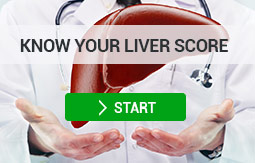What is a liver disease rash?
Dermatologists find that our skin often shows what is happening inside of the body. A liver disease rash could indicate a further health problem. An example of where this effects your liver would be jaundice, where the skin and the whites of the eyes become yellow. Although yellowing skin is not the only skin change that indicates liver disease, darkening of the skin and bronzing of the skin can point to liver disease or failure and rashes can point to a number of liver health problems.
What’s in this article
- A liver disease rash and hepatitis C
- When does liver disease rash occur?
- Signs & symptoms
- Diagnosis
- Treatment
A liver disease rash and hepatitis C
Skin rashes may be a sign of hepatitis C, and should not be ignored. Rashes that appear on your skin as a result of hepatitis c show that your body is busy trying to fight the infection on its own. This rash is called urticaria and is the most common rash for those suffering from acute hepatitis c virus. This is a short-term infection, according to the National Digestive Diseases Information Clearinghouse, acute HCV typically lasts for six months or less. Urticaria can also cause the skin to swell, rashes on your face and often comes in rounds that can last for several hours. Urticaria can also develop as a result of certain allergic reactions.
You may develop a rash from the vaccine that treats hepatitis c. It is important to know where the most common places are for these rashes to develop, for urticaria it is typically itchy and widespread across the body. Rashes from the treatment of hepatitis c appear at points of contact from treatments, on the chest, arms, and torso.
Signs & symptoms
If a rash is due to liver damage skin symptoms may include:
- redness
- severe itching in the same spot
- development of “spider veins” on any part of the body
- brown patches on the skin
- patches of extremely dry skin
Additional symptoms may include stomach swelling and bleeding that does not stop.
Diagnosis
Diagnosis can be difficult as rashes can be linked to many different issues. It is not recommended to self-diagnose a skin rash, so always consult your doctor if you have any kind of rash appearing on your body. Your doctor can identify whether an underlying condition is at fault and can help you find the right treatment for you.
Treatment
Cold packs and hydrocortisone cream can provide relief from itchiness and discomfort as the rash heals. Oral antihistamines may also be helpful if topical therapies do not relieve your symptoms. In a case study featured in the Gastroenterology and Hepatology Journal it is clear that discontinuing ribavirin (treatment for heaptitis c) for several days was enough to recover from the rash. If your rash continues and worsens your doctor may think about changing treatments.
You can decrease the intensity of your rash yourself by limiting your sun exposure, bathing in cool water, using unscented products on your skin and applying lotion to the skin after you wash.
Find out more about the basics of liver health with Dr. Tarek Hassanein, M.D.
References
aad.org
healthline.com
ncbi.nlm.nih.gov
www.amsety.com

 (442) 244-5115
(442) 244-5115















